Melissodes sp. on the photographer’s finger, photo courtesy of Krystle Hickman
In partnership with LA Nature for All, Earth Share is a series of conversations on IGTV with the goal of sharing knowledge and inspiration with organizations and individuals caring for the Earth. The following is a partial transcript of our conversation with Krystle Hickman, native bee photographer and community scientist. It has been edited for length and clarity. All images courtesy of Krystle Hickman.
Click here to watch the complete episode.
 Paloma: What does nature mean to you and how would you describe it?
Paloma: What does nature mean to you and how would you describe it?
Krystle: I guess that’s kind of a complicated question to answer because it changes and evolves with me. Whatever I say right now may change in the future. As a child, nature was something where I went outside and just enjoyed it. There wasn’t a lot of thought that went into it. As I got older it became a place where I could escape and meditate. Since I have gotten into photography lately and specifically bee photography, I started to see how complex nature actually is and how there are different interlocking features. It is something I am really starting to admire, appreciate and really value.
PA: What are your earliest memories of being in nature?
KH: I would say the first memories I have of being in nature are of when I lived in Omaha, Nebraska… I remember my mom had these rose bushes on the side of the house and there were ladybugs just all over it. So I would spend hours with the ladybugs. In certain times of the year, box elder bugs would show up, and then it changed to spiders, so I would have spiders in cups that I would bring inside that no one liked except for me … I went camping a lot too. Specifically with the Girl Scouts: they would call me the “Bug Inspector” because I would just pick up anything!
Levi: I notice you do a lot of photography at Arlington Garden. First talk about the work that you do, and how you came to that.
KH: The work that I do started out with photographing honeybees. In 2018, I took this picture of a random bee that was not a honeybee and I thought, “what is this?” And it led me to an exploration of native bees. That’s basically what I photograph now: it’s this interlocking passion of photography and bees that I merged.
Where Arlington Garden came in: I used to drive past it all the time. There was this random garden there. I ignored it for awhile, but one day I decided to check it out. A lot of gardens you go to [don’t have] native plants, but that was one thing I really loved about Arlington Garden. There are native plants, and I started seeing native bees and all these [other] little critters! It’s just a great place to go and is a beautiful garden. I love that it’s open to the public.
LB: People get really excited in the spring when everything is blooming, one of my favorites is the lupines and specifically all those bees that come to the lupine. And at this time of year we get a lot of people kind of disappointed that a lot of our natives are dormant during this part of the summer. I’m wondering what you’re able to find this time of year when you go there to photograph.
KH: I’ll mention what I saw there this weekend. I didn’t even make it into the garden yesterday, because I was there on the sidewalk for so long. You guys have a whole line of buckwheat, which is great. Wherever you go, if you see buckwheat, you’re going to find a bunch of native bees, wasps, and so many different things. I saw some globe mallows blooming and there were some Agapostemon native bees there, which are really cool because they are bright green, but you’ll also see some Diadasia bees sleep in the globe mallows. These are cute, little, fluffy bees that look like they’re Pokemon or something like that.
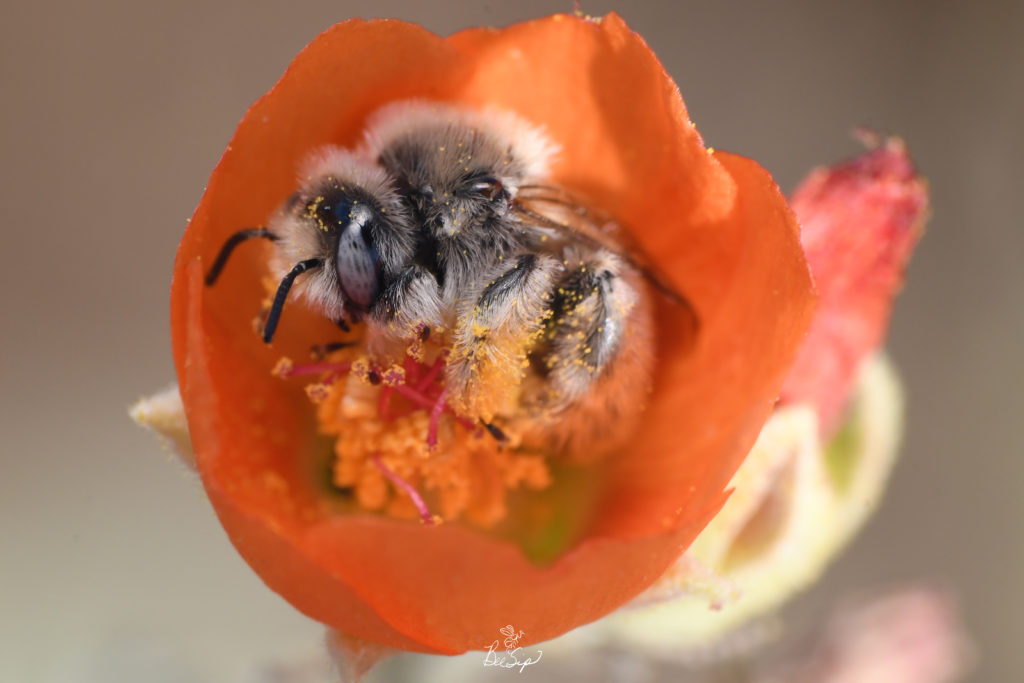 Diadasia sp. bee in a globe mallow blossom
Diadasia sp. bee in a globe mallow blossom
LB: There’s a gardener at Hahamongna nursery who was telling me about the bees that come specifically for globe mallow that at night, as the blossoms close, they close around the bee, and they wake up in the morning with the flower [opening]. Have you seen one?
KH: Yes, you actually have some there, and I photographed one today. There’s some on my Instagram too, if you want to check one out there. They [Hahamongna Nursery] are talking about the Diadasia bee. They are also called “globe mallow bees.” I’ve seen those all over the place. It’s really interesting to see them waking up in flowers.
PA: How did you become interested in this work, learning all of the scientific names and educating people on native bees?
KH: It evolved naturally. I was really passionate about saving the honey bees because I thought the honey bees were the ones going extinct, and when I found out it was actually the native bees, not the honey bees! One thing that I really wanted to do was educate people: “Hey, there are native bees here. How diverse and beautiful they are!” In California, there are 1,600 species, and in the U.S., there are 4,000.
One way I want to educate people is through photography. A lot of photos I put out aren’t great for identifying bees, but they are, I hope, beautiful photos…. I want people to look at these bees, think of them as beautiful, and try and value them as I do, value that they exist, or [even] just be aware of them.
LB: Let’s talk about the community you work in and how it serves you / how do you serve that community? I know as a photographer you do a lot of work on your own, but what does that community look like that supports it?
KH: As far as the types of people, like the types of careers that are involved in my community, it’s very, very diverse. Me, specifically, is photographing native bees, but you run into a lot of entomologists who see different species of flies, wasps, butterflies, a lot of different pollinators. All of these little creatures are usually on plants, specifically native plants, so you see a lot of people who study plants.
It’s natural that you get connected to lots of people. Everyone seems very open and it’s easy to start to self-educate. There’s great books out there. People love recommending books, like The Bees in Your Backyard, that’s a great book. There’s also the iNaturalist [App]. I’ve never run into someone who’s into bee taxonomy who rejects me asking a question. Everyone is very open. I really appreciate that.
PA: For those who aren’t aware, can you describe what citizen science is?
KH: Basically, citizen science is a person who studies a certain category of science, typically in nature, who doesn’t have a degree. … I found this interesting and went down the rabbit hole. A lot of citizen scientists make contributions to science because they are out there every day looking.
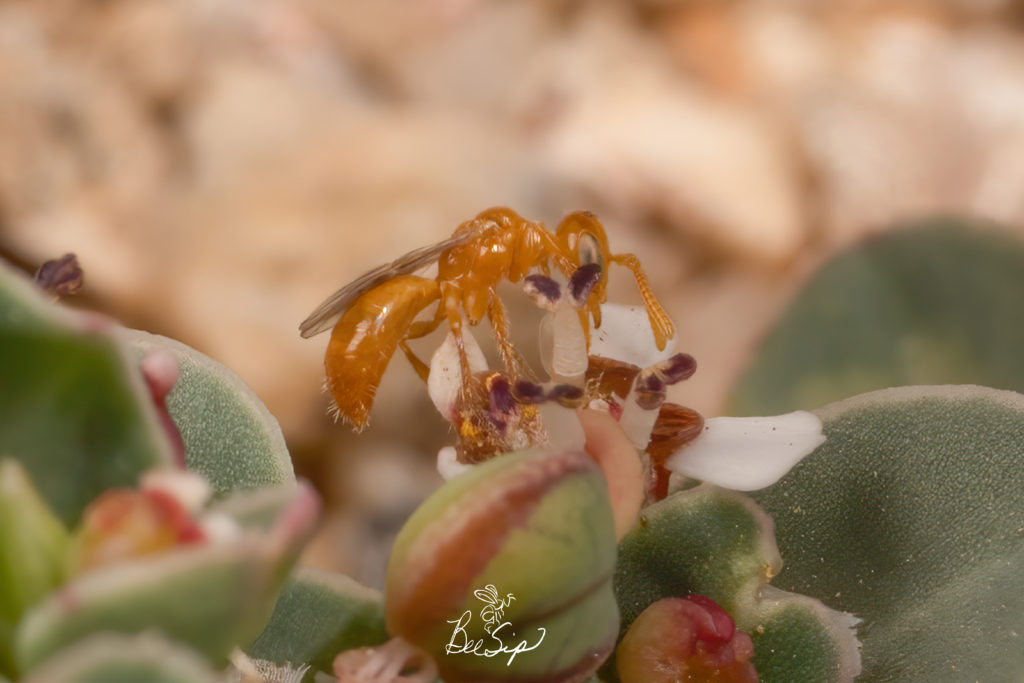 Perdita minima, the smallest bee in the world
Perdita minima, the smallest bee in the world
LB: This brings up a question [from our audience on IG]: How can lay people find out more native bees?
KH: I think one of the best things to do is get out there and stick your head in plants and look around. Right now, it’s a great time for the buckwheat. If you see something flying or crawling around on the buckwheat, or any flower that you see, just take pictures so that you can save it for identification later. iNaturalist is a great app. You can submit your photos there. There are a lot of entomologists to identify whatever you saw. There’re also different Facebook groups where people are very open to providing information about what you see. Go to Arlington, which is a great place for native plants, and just walk around. Stare at bushes! Educate yourself. There’s really no wrong way to start!
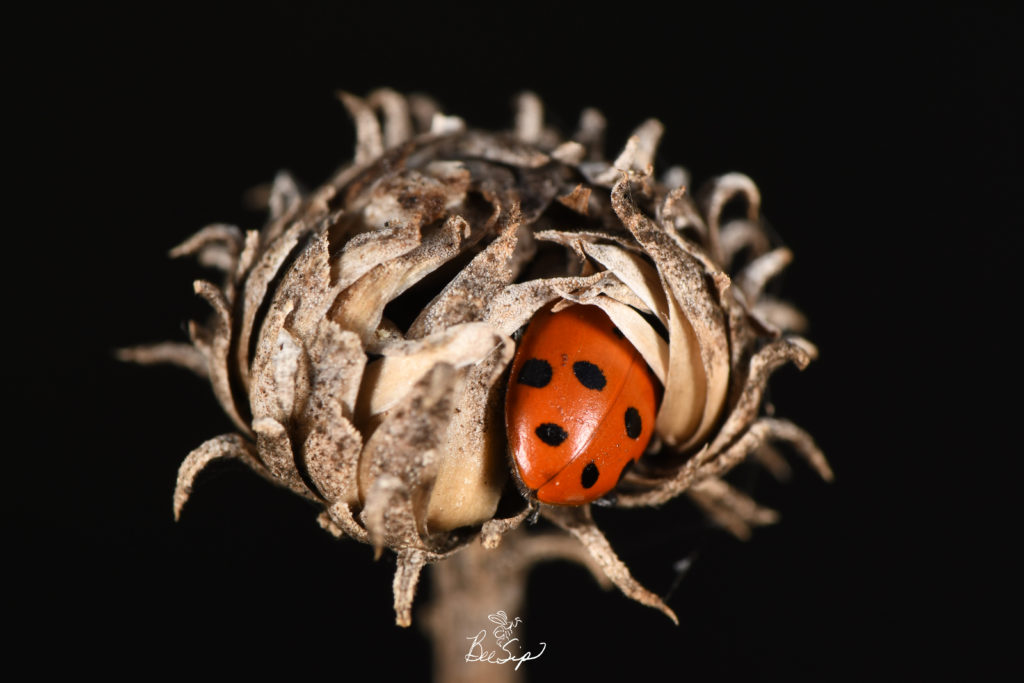 Ladybug (member of Coccinellidae) at Arlington Garden
Ladybug (member of Coccinellidae) at Arlington Garden
LB: It’s kind of amazing what you can see when you are in a place like Arlington, or a space with plants, when you slow down and look, there’s a whole world happening.
KH: It’s amazing. I went to the Mojave Desert about a month ago and I found this Perdida, a little tiny native bee. It was on a buckwheat plant, and it was yellow. It matched the exact yellow of the plant. Also on there was a spider the exact same yellow and a caterpillar that was the exact same yellow. It was interesting how these things evolved together. It was such a great, specific example of a tiny ecosystem.
If you go to Arlington, you’ll start to notice little ecosystems where the plants and animals match each other because they evolved together. One reason it’s really important to sustain areas with native plants is that many creatures thrive there, because of their symbiotic relationships. If the native plant disappears, the native bee or pollinator disappears. If the pollinator disappears, the plant can also.
PA: One thing we are really interested in with citizen science, and this movement to change it to be called “community science,” is how accessible it is to everyone. You don’t need a degree, you don’t need to study for years, you can be interested and go out into the field and learn on you own. Can you talk a little about how you can inspire people to get out into the field as well?
KH: I think it’s great to have terms that [make] people feel included and that includes them. I feel that one of the things about what I’m doing is that I don’t feel like there aren’t a lot of people out there that look like me. I think it’s great for people who had an interest in this but went a separate way… if they see more people who look like them, they can realize this is something that they can do. This is a diverse interest that you can have.
I hope my photos inspire people to go out or talk about it. I hope that [paying attention to] things people have walked past before inspires people naturally to go out.

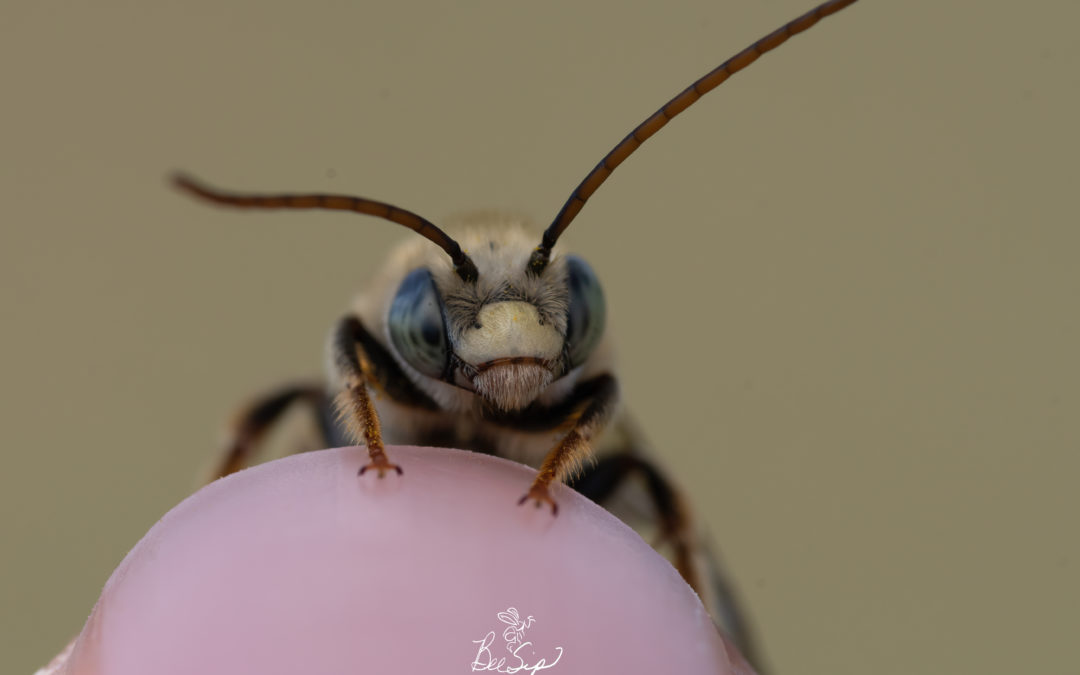
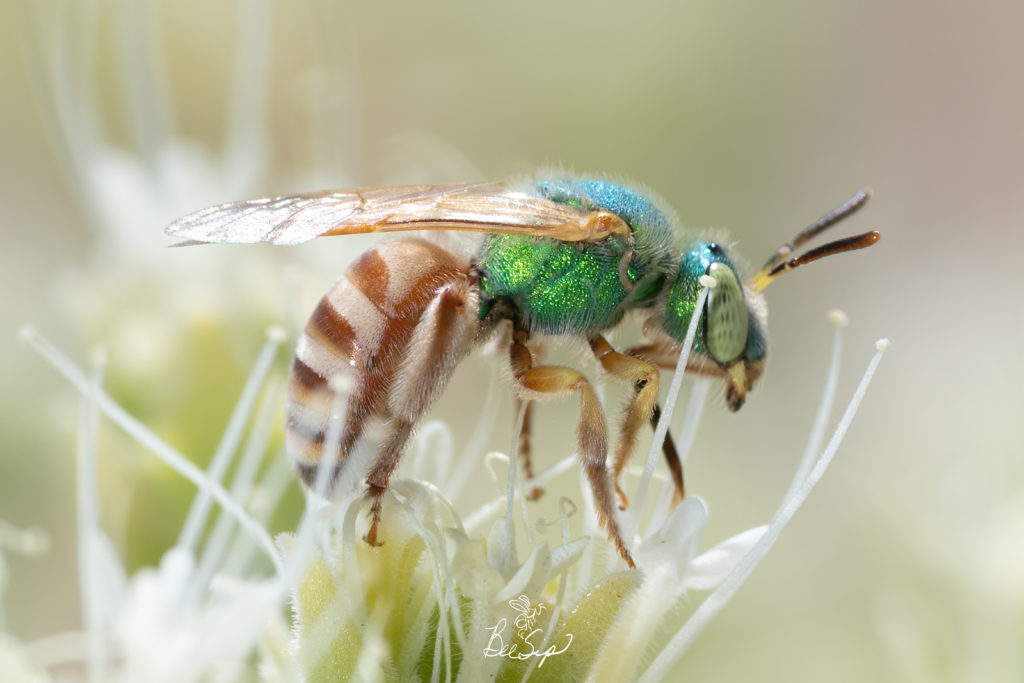

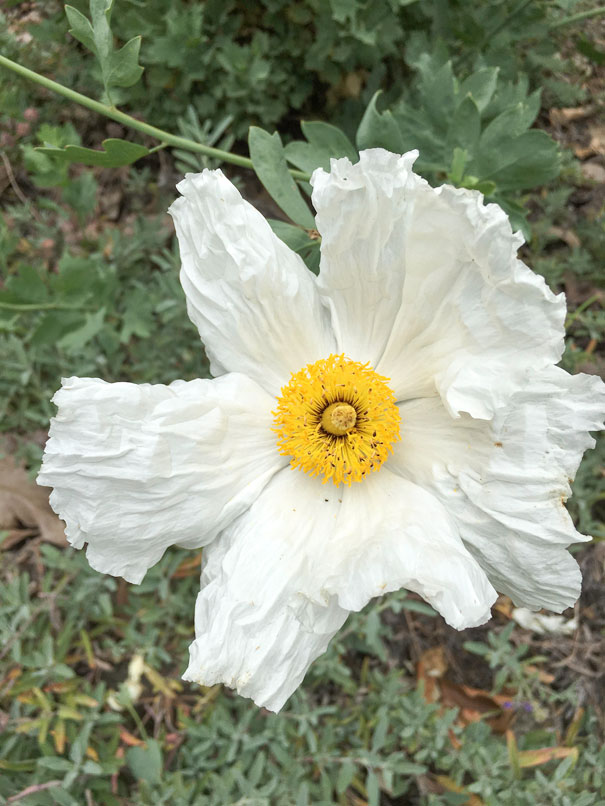
Recent Comments